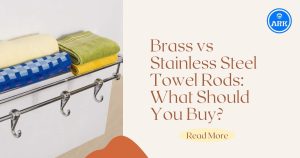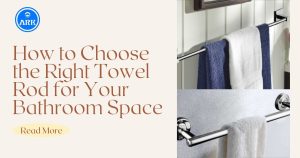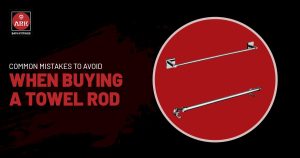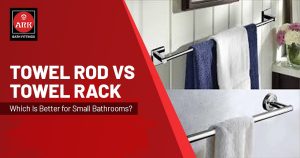Waste couplings are one of those plumbing parts we rarely think about—until something goes wrong. But these small fittings play a big role in how efficiently your sink drains and how clean your kitchen or bathroom stays. Simply put, a waste coupling connects your sink to the drainage pipe, helping direct used water away while stopping smells and leaks from creeping back up. Choosing the right one makes a difference.
Let’s break down the top 10 types of options, so you can choose what works best for your setup.
1. Full-Thread Waste Coupling
A full-thread waste coupling has threading all the way along its length. This lets it screw tightly onto your sink, creating a snug and leak-free fit.
- Great for: Sinks without overflow holes
- Common Materials: Brass or stainless steel
- Why It Works: It’s strong and reliable, giving you a tight seal that lasts.
2. Half-Thread Waste Coupling
Half-thread couplings are partly threaded and partly smooth. They’re made to fit sinks with overflow systems, letting extra water escape without flooding.
- Great for: Sinks with overflow holes
- Common Materials: Brass, stainless steel, or even plastic
- Why It Works: It’s versatile and works with a wide variety of modern sinks.
Read more: Can Sensor Taps Work Without Electricity?
3. Pop-Up Waste Coupling
These have a built-in lever or knob that lets you open and close the drain without needing a separate plug. They’re often found in bathroom basins.
- Great for: Bathroom sinks
- Common Materials: Chrome-finished brass or plastic
- Why It Works: Offers a neat look and is easy to use.
4. Click-Clack Waste Coupling
You press down to close the drain and press again to open it. It’s as easy as that. No knobs, no levers.
- Great for: Any sink where convenience matters
- Common Materials: Brass or plastic with chrome finish
- Why It Works: Modern, minimal, and super simple to operate.
5. Bottle Trap Waste Coupling
This one includes the trap and waste coupling in a single unit. It’s ideal for bathrooms where pipes are exposed and style matters.
- Great for: Exposed plumbing, especially in bathrooms
- Common Materials: Chrome-plated metal or plastic
- Why It Works: Looks good and blocks smells effectively.
6. Grid Waste Coupling
This type has a built-in grid to catch food bits or hair before they head down the drain. A must-have for kitchen sinks.
- Great for: Kitchen sinks or high-use areas
- Common Materials: Stainless steel or heavy-duty plastic
- Why It Works: Helps prevent blockages and keeps your pipes clean.
Read more: Top 5 Bathroom Tap Problems and How to Fix Them
7. Compression Waste Coupling
This coupling type uses a compression nut and ring to seal the pipe. It’s tool-free, easy to fit, and just as easy to take apart when needed.
- Great for: DIY jobs and quick fixes
- Common Materials: Brass or plastic
- Why It Works: Simple and reusable, no glue needed.
8. Solvent Weld Waste Coupling
A more permanent solution, this one is glued onto your waste pipe using solvent cement. Best for long-term installs.
- Great for: New plumbing setups
- Common Materials: PVC or ABS plastic
- Why It Works: Once it’s fixed, it’s not going anywhere. Strong and leak-free.
9. Flexible Waste Coupling
Got a tricky space under the sink? A flexible coupling can bend to fit. It’s made from rubbery or soft plastic materials.
- Great for: Tight or awkward spaces
- Common Materials: Flexible plastic or rubber
- Why It Works: Reduces stress on plumbing and adapts to weird angles.
10. Twin Waste Coupling
Perfect for double sinks or when a dishwasher also drains into the sink, this coupling merges two outlets into one drain line.
- Great for: Kitchens with double sinks or added appliances
- Common Materials: Plastic or metal
- Why It Works: Keeps your under-sink space organized and efficient.
Read more: How to Clean and Maintain Your Bath Fittings?
Choosing the Right Waste Coupling for Your Sink
Here are a few things to keep in mind before buying a waste coupling:
- Sink Type: Does it have an overflow? If yes, go for a half-thread.
- Space: Limited room? Flexible or bottle trap couplings may help.
- Style: Exposed pipes? Choose something with a polished finish.
- Maintenance: A removable grid or trap makes cleaning easy.
- Material: Brass and stainless steel are durable. Plastic is budget-friendly.
A waste coupling might not be the first thing you think of during a kitchen or bathroom upgrade—but it should be on your checklist. From flexible designs for tight spots to sleek pop-up options that blend right in, there’s a waste coupling out there for every sink setup.
Getting the right one means fewer plumbing headaches, cleaner drains, and longer-lasting fixtures. So whether you’re replacing an old unit or building from scratch, take the time to choose a waste coupling that fits your space and needs.
And if you’re still unsure which type suits your setup, your local hardware expert or plumber can help you pick the perfect fit.
Read more: What Are the Latest Trends in Bathroom Taps?












